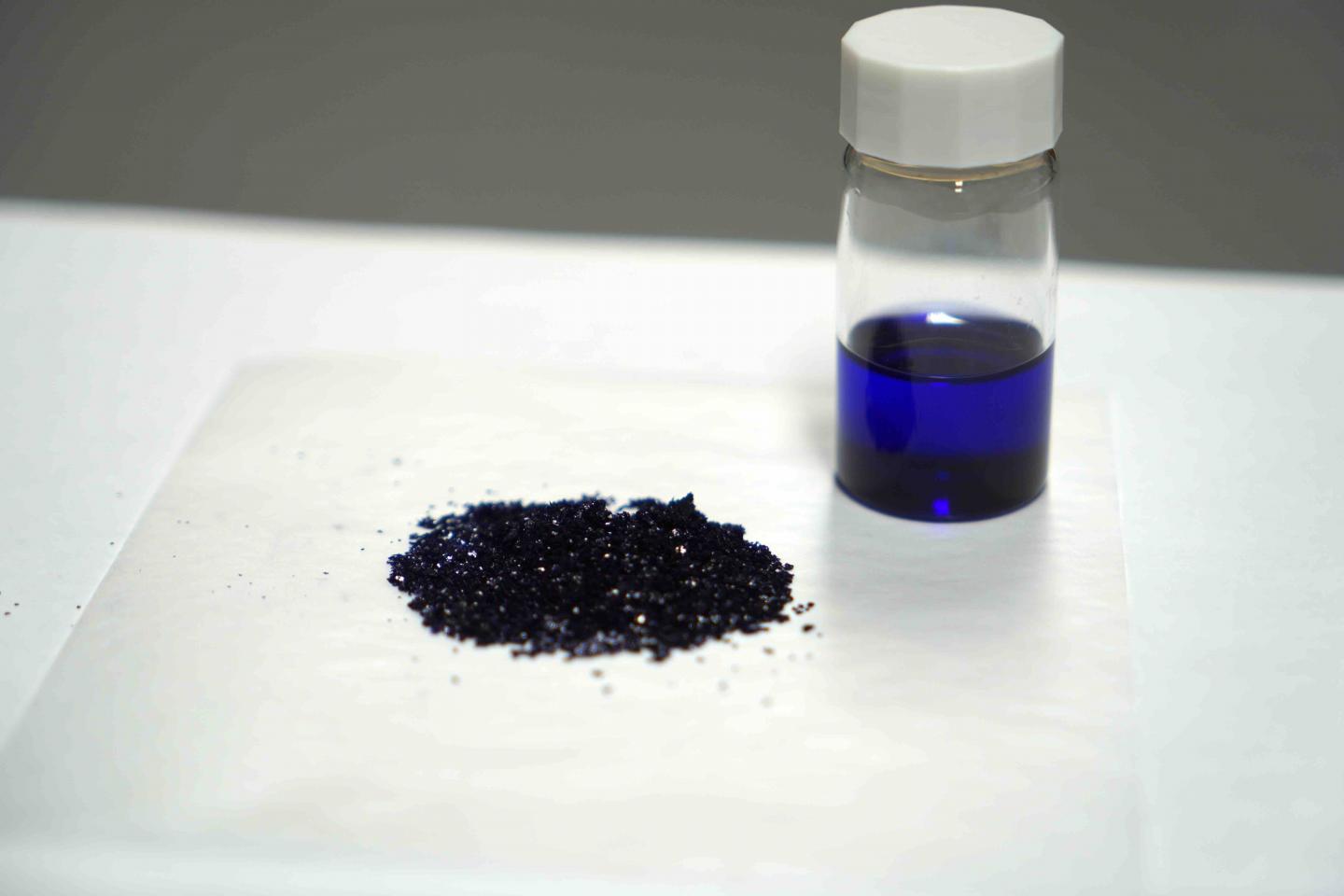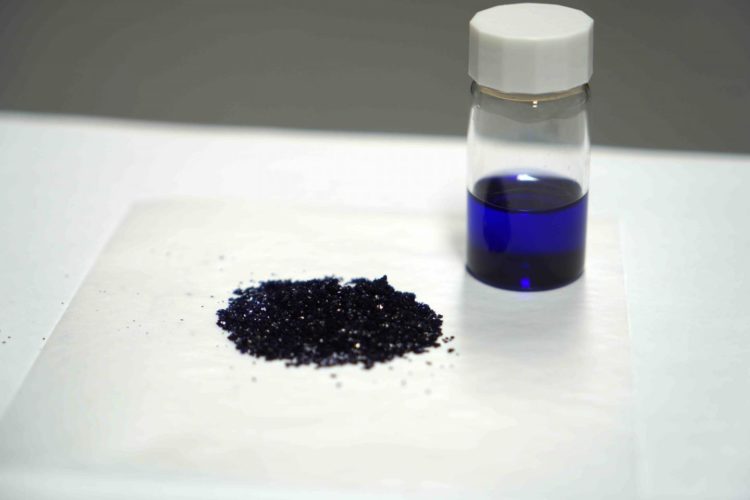
Credit: Shinshu University
Azulene is a pretty neat substance. As the name suggests, it displays a peculiar blue color. First synthesized in the 1930s, azulene has been used in medicine for its bioactive properties. Now azulene derivatives are being studied for use in organic electronics such as n-type semiconductors, solar cells and non-linear optics. This is made possible by the functionalization of the azulene ring. Odd-positions of the ring had been researched extensively for their high reactivity, though it was hard to select their functionality due to their electronic properties. Highly functionalized azulenes were enabled by cross-coupling reactions of even-numbered positions of azulenes. However, it has been difficult to synthesize these precursors.
Associate Professor Taku Shoji at Shinshu University et al. was successful in direct synthesis of 2-arylazulene. One of the few researchers who specialize in azulene synthesis, Professor Shoji states that the breakthrough in this study allows for the synthesis of azulene on a gram-scale instead of milligrams. The previous possible production volume made it difficult for possible use in organic electronics. Being able to synthesize azulenes from readily available 2H-cyclohepta[b]furan-2-one derivatives and silyl enol ether is a great step forward in practical applications.
The fluorescence of the azulene derivatives in acidic conditions (which can be seen in the photo) was observed unexpectedly during this study. Though this property of azulene derivatives had been previously reported, the research group found that 2-phenylazulenes exhibit the emission in acidic media and the fluorescence wavelength depends on the electronic properties of the substituents on the substituted benzene ring. The group is collaborating with photochemical experts to elucidate the mechanism of this unexpected fluorescence.
Professor Shoji and his team continue to attempt to synthesize 2-arylazulene at a lower temperature using an appropriate catalyst. Professor Shoji states that “although azulene have been studied for a hundred years, new synthetic methods, reactivity and physical properties continue to be discovered.” He remains fascinated by what this mysterious blue substance can reveal and ultimately be applied for.
###
###
About Shinshu University:
Shinshu University is a national university in Japan and working on providing solutions for building a sustainable society through interdisciplinary research fields: material science (carbon, fiber, composites), biomedical science (for intractable diseases, preventive medicine), and mountain science. We aim to boost research and innovation capability through collaborative projects with distinguished researchers from the world. For more information please see: http://www.
Media Contact
Hitomi Thompson
[email protected]
81-263-373-529
Related Journal Article
http://dx.





